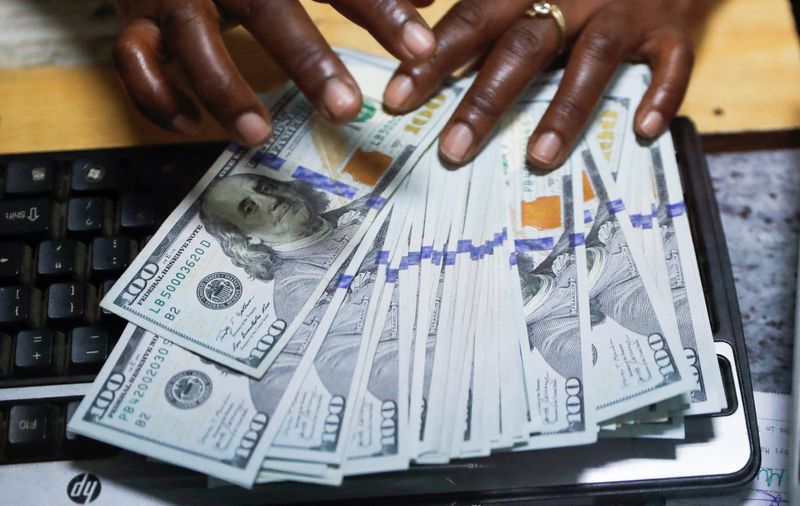
By Ray Wee
SINGAPORE (Reuters) – The dollar was on track for its best weekly performance in more than a month on Friday, supported by expectations of smaller interest rate cuts this year and a view that the U.S. economy will continue to outperform the rest of its global peers. .
The dollar started the new year strong, hitting its highest level in more than two years at 109.54 against a basket of currencies on Thursday, continuing its stellar rally from last year.
Its rise came against the backdrop of a more hawkish Federal Reserve and a resilient US economy.
“Dollar strength appears to be here to stay for now in early 2025 given that the story of US exceptionalism is here to stay, and it continues to come with high US yields,” said Charu Chanana, chief investment strategist at Saxo Bank.
“Add to that the uncertainty about the policies of the incoming (Donald) Trump administration, and it also makes the safe side of the dollar look attractive.”
Ahead of US President-elect Trump's inauguration on January 20, markets treated his imminent return to office with caution due to uncertainty over his plans to impose massive import tariffs, tax cuts and restrictions on immigration.
This in turn gave the dollar additional support as a safe haven.
The latter reached 109.18 and was on track for a weekly gain of 1.1%, its strongest levels since November.
Meanwhile, the euro was among the biggest losers against the rising dollar, after falling 0.86 percent in the previous session to the lowest level in more than two years at $1.022475.
“With regard to the eurozone, there may be a direct impact of higher trade tariffs on the eurozone or its economies, but perhaps more important is higher tariffs on China, which will also be a kind of vulnerability in the eurozone.” “The euro zone,” said Kyle Rodda, senior financial markets analyst at Capital.com.
The single currency last bought $1.0272 and was headed for a 1.6% weekly decline, the worst since November.
Likewise, the British pound rose 0.04% to $1.2385, after falling 1.16% on Thursday. It was on track to lose nearly 1.6% during the week.
The dollar has also helped expand its dominance against other currencies through potentially widening price differences between the United States and the rest of the world.
While traders are now pricing in roughly 44 basis points of interest rate cuts from the Fed this year, they are expecting over 100 basis points of easing from the European Central Bank and around 60 basis points from the Bank of England.
Elsewhere, the yen rose 0.16% to 157.25 per dollar, but was not far from its lowest level in more than five months of 158.09 per dollar hit in December.
The Japanese currency has been a victim of the stark interest rate differential between the US and Japan for more than two years now, with the Bank of Japan's warning about further interest rate hikes causing more pain for the yen.
The yen fell more than 10% in 2024, continuing its losses for the fourth year in a row.

At the bottom, the Australian dollar rose 0.2 percent to 0.6216 US dollars, but remained stable near the lowest level in more than two years, and was heading towards a 0.2 percent decline over the course of the week.
The New Zealand dollar rose 0.17 percent to 0.56065 US dollars, but it is also heading towards a weekly loss of 0.66 percent.







